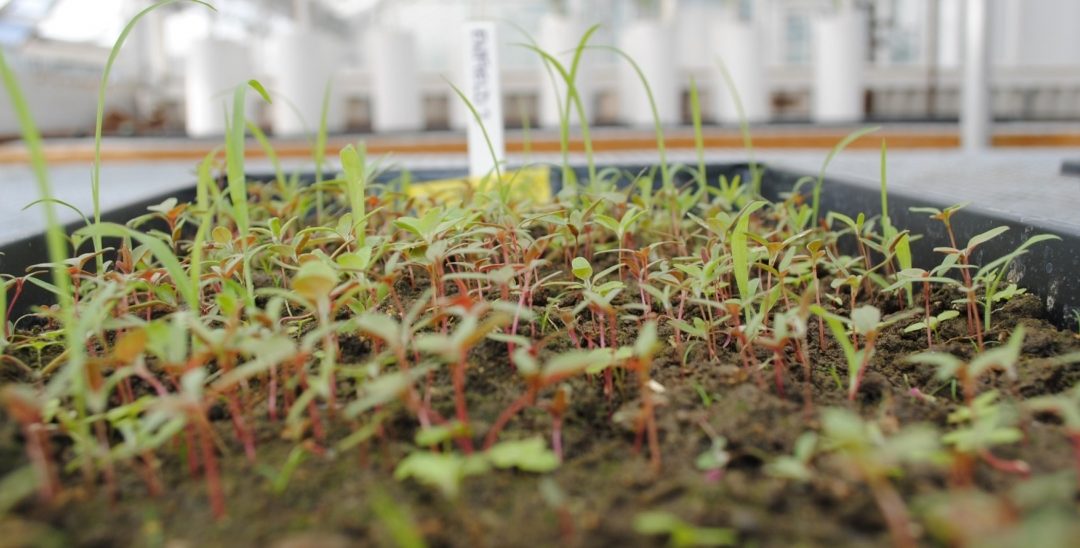Scientists from Maine, New Hampshire, and Vermont have completed the first comprehensive assessment of weeds found on organic vegetable farms in northern New England and, you won’t be surprised to hear, they’re warning that changing climate will mean changing makeup of the weeds that we face. More formally: “The analyses also indicate that a number of agriculturally important weed species are associated with specific U.S. Department of Agriculture plant hardiness zones, implying that future changes in climate factors that result in geographic shifts in these zones will likely be accompanied by changes in the composition of weed communities and therefore new management challenges for farmers.”
From UNH News Service:
“We are living in a period of rapid and to some extent unpredictable environmental change brought about by a variety of natural and human-mediated factors, including climate change, production practices, technological advances, and others,” said Tom Davis, professor of genetics at the University of New Hampshire. “The purpose of this project was to establish a baseline assessment of the weed problems facing organic vegetable growers in the region as a basis for detecting and predicting the evolutionary emergence of new, problematic weeds.”
“Even weeds that are currently rare or non-existent in certain areas of our region may become more prevalent in the future due to changes in our environment, and those should be of concern to any farmer, whether they are organic or not,” said Richard Smith, associate professor of natural resources and the environment at UNH.
This research was funded by the Northern New England Collaborative Research Funding Program, a partnership of the Maine Agricultural and Forest Experiment Station, New Hampshire Agricultural Experiment Station, and the Vermont Agricultural Experiment Station.
Scientists sampled weed seedbanks and measured soil characteristics on 77 organic farms across the region. They found temperature-related variables such as latitude, longitude, and mean maximum and minimum temperature were the strongest and most consistent correlates with weed seedbank composition. The analyses also indicate that a number of agriculturally important weed species are associated with specific U.S. Department of Agriculture plant hardiness zones, implying that future changes in climate factors that result in geographic shifts in these zones will likely be accompanied by changes in the composition of weed communities and therefore new management challenges for farmers.
Finally, researchers found that at least some weed species in the region are much more genetically diverse than had been previously recognized. Some of these species may actually have positive economic potential.
Specifically, scientists identified 113 weed species in soil seedbank samples collected across the 77 farms. The most abundant weed species were slender rush, hairy galinsoga, common purslane, Veronica spp., common lambsquarters, redroot pigweed, large crabgrass, and low cudweed.
According to the USDA’s most recent Certified Organic Survey released in 2017, the total value of sales of organic vegetables in Maine, New Hampshire, and Vermont is $23.2 million.
“Weeds continue to be one of the most difficult management challenges that organic farmers face,” said Smith. “Our research has not only provided a much clearer picture of the weed species present in our region, it has also provided farmers with a ‘heads up’ in terms of which particular weeds they can expect to see more (and also less) of in the near future.”
In addition to Davis and Smith, collaborators include Eric Gallandt, professor of weed ecology at the University of Maine; Sidney Bosworth, University of Vermont Cooperative Extension professor of crop science; Ann Hazelrigg, University of Vermont Cooperative Extension assistant professor of plant pathology; Nick Warren, graduate student and manager of the UNH agroecology laboratory; Sarah Levy, UNH graduate student in genetics; and Sonja Birthisel and Bryan Brown, graduate students in ecology and environmental sciences at the University of Maine.
This research is presented in the most recent issue of the journal Weed Science (DOI: doi.org/10.1017/wsc.2017.40). This material is based upon work supported by the NH Agricultural Experiment Station, the Maine Agricultural and Forestry Experiment Station and the Vermont Agricultural Experiment Station, through joint funding of the National Institute of Food and Agriculture, U.S. Department of Agriculture, under award number 1006827.


 Return to the Concord Monitor
Return to the Concord Monitor